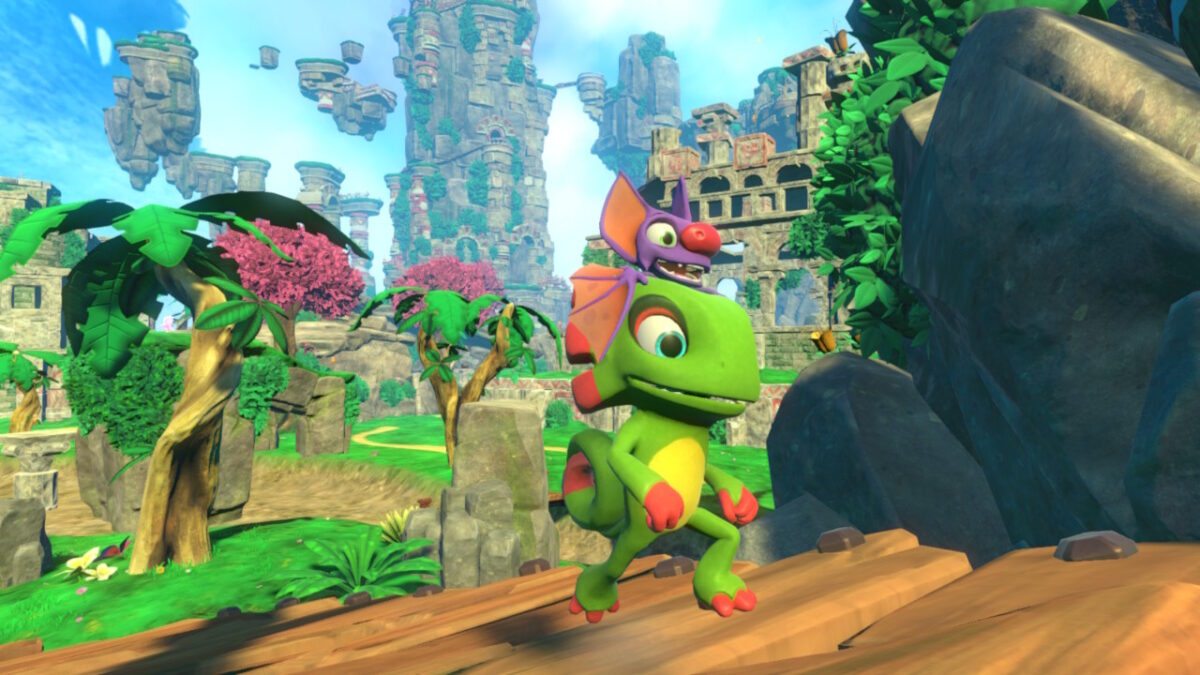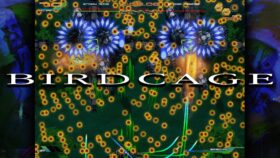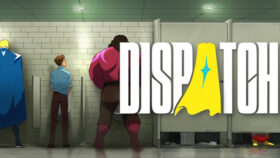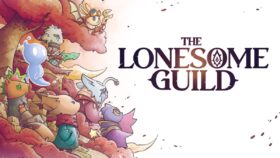To understand Yooka Replaylee, it helps to remember the gaming landscape of 2017. It was a time when the 3D platformer, once a giant of the industry, felt like a relic. The air was thick with nostalgia for the Nintendo 64 era, and into this landscape came Yooka Laylee, a crowdfunded dream project from Playtonic Games—a studio formed by veterans of the legendary developer Rare.
It was billed as the spiritual successor to Banjo Kazooie, whose director has departed Rare after 36 years this week. It carried the immense weight of a generation’s childhood memories. The final product, however, was a mixed bag. It had the googly eyes, the charming British wit, and the sprawling, colorful worlds, but it was also held back by some of the annoying parts of the games it was based on. A clunky camera, slippery controls, and a general lack of modern polish left many feeling that while the spirit was willing, the execution was weak.
Fast forward to today, and Playtonic has done something rare in the games industry: they’ve given themselves a do-over. Yooka Replaylee, launched on October 9, 2025, for PC, PlayStation 5, Xbox Series X|S, and Nintendo Switch 2, is not a simple remaster. The developers have called it a “remakester,” a ground-up overhaul designed to address nearly every piece of criticism leveled at the original. This is more than a new coat of paint; it’s the studio admitting that the first attempt missed the mark and making a bold attempt to fulfill the promise that ignited so much excitement years ago.
This whole redemption story is a fascinating narrative in itself. It raises a central question that hangs over the entire experience: In the quest to fix every flaw, has Playtonic finally created the masterpiece fans have been waiting for? Or, in sanding away the rough edges, have they inadvertently polished away the game’s very soul?
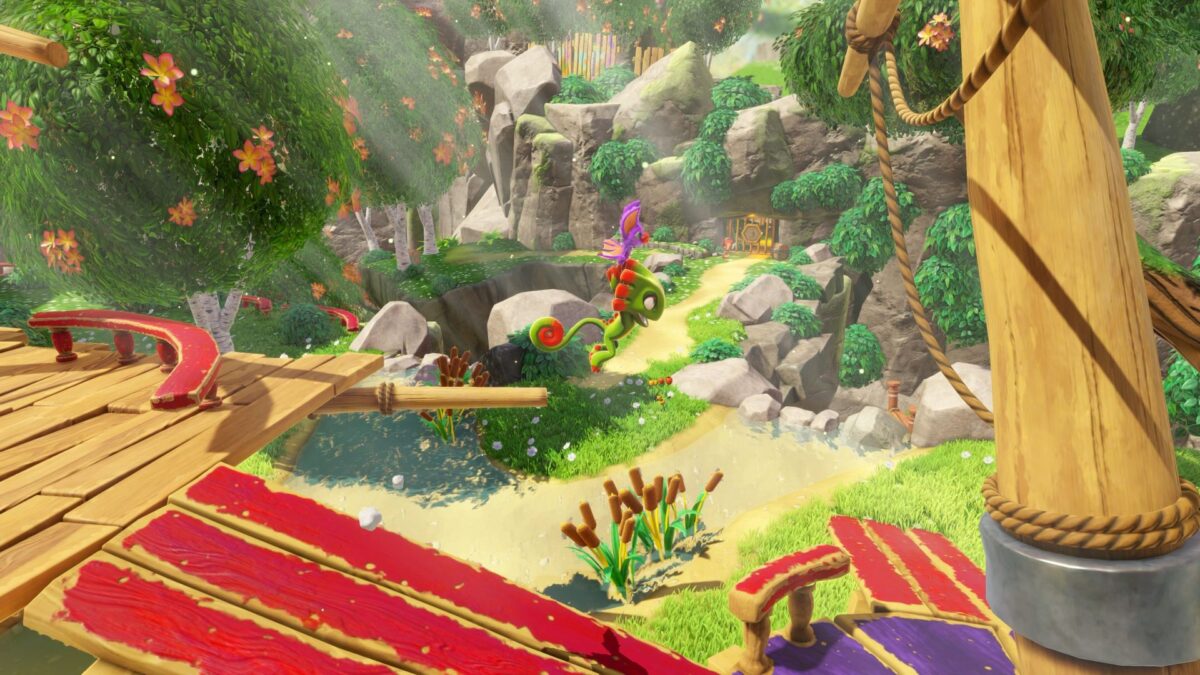
Yooka Replaylee Review
The most immediate and successful change in Yooka Replaylee is its presentation. This is Playtonic’s opening argument that this project is a high-quality, top-tier endeavor, and it is an incredibly convincing one. The graphical leap forward is massive. This isn’t just a resolution bump; it’s a complete rethinking of the game’s art style that challenges some of the best-looking stylized games on the market.
Character models have been completely reworked; Yooka now has a distinct scaly texture, while Laylee’s fur looks soft and real. The worlds themselves feel more vibrant and alive, filled with richer textures, more plants, and dynamic environmental effects like realistic fog and vastly improved lighting that were absent in the original. The result is a game that retains its charming, cartoonish flair but now presents it with a level of detail and polish that feels truly modern.
This beautiful presentation isn’t just for show. The investment in a full orchestral soundtrack elevates the entire experience from an indie throwback to a premium adventure. The original score, already a highlight thanks to the legendary composers Grant Kirkhope and David Wise, has been beautifully re-recorded and arranged by the Prague Philharmonic Orchestra. The music now soars with a cinematic feel that gives each world a grander sense of scale and adventure, perfectly complementing the visual enhancements.
This level of polish makes a statement. It signals a deep commitment to elevating the IP beyond its budget-Kickstarter roots and proves the studio has the technical and artistic skill to compete with the genre’s leaders. It feels like the developers are showing us what they could have made the first time around with more resources and time.
Performance-wise, this overhaul largely delivers. On PC, the game is exceptionally well-optimized, capable of running at over 100 FPS on capable hardware. On PlayStation 5 and Xbox Series X, the experience targets a smooth 60 FPS.
While some have noted infrequent frame drops during particularly hectic moments, it’s generally a stable and responsive experience. The one real letdown on this otherwise pristine presentation is the Nintendo Switch 2 version. At launch, this port is capped at a disappointing 30 FPS and suffers from noticeable performance hitches and input lag, a major point of contention for a platform that many feel should be a natural home for this genre.
Yooka Replaylee Gameplay
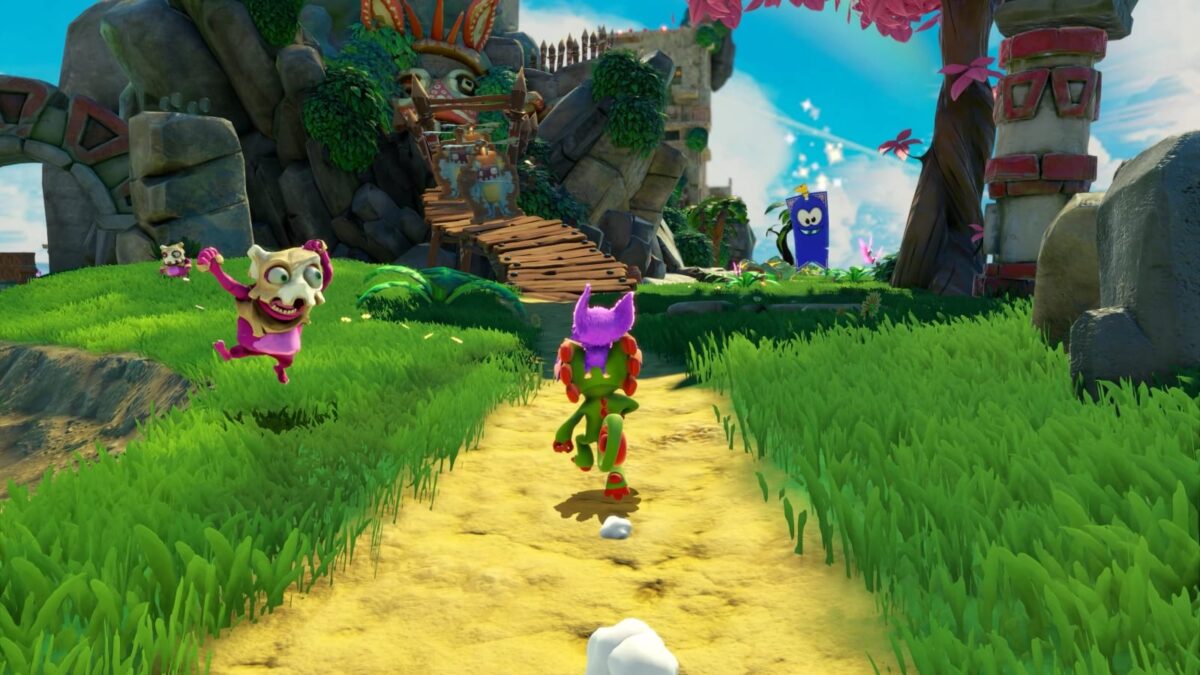
Beyond the shiny new presentation, Yooka Replaylee delivers a series of key improvements that address the original’s most persistent and frustrating issues. Mechanically, this is simply a better game to play. The clunky, often infuriating, camera system of the 2017 release has been completely replaced with a modern, reliable system that rarely gets in the way of the action. It’s perhaps the best compliment one can give a camera in a 3D platformer: one almost never has to think about it.
The controls have also been massively improved. Movement now feels tighter, more responsive, and satisfyingly fluid. One of the best changes is the removal of the stamina meter that limited the use of Yooka’s roll ability. In the original, this restriction made traversing the large worlds a chore; now, being able to roll freely dramatically improves the flow and pace of exploration, making movement a joy rather than a chore.
These core fixes are supported by a suite of much-needed quality-of-life features that bring the game up to modern standards. The addition of a proper world map and a challenge tracker makes navigating the sprawling levels and keeping track of progress far more manageable. Furthermore, unlockable fast-travel points have been introduced, drastically cutting down on the boring backtracking that plagued the original experience.
However, this modernization comes with an interesting side effect. In the original game, a significant portion of the difficulty came not from clever level design, but from simply fighting against the game’s own mechanics. A seemingly simple jump could become a frustrating ordeal due to a wonky camera angle or slippery controls. By removing this layer of artificial difficulty, Yooka Replaylee exposes the underlying simplicity of its core challenges.
The platforming puzzles and combat encounters, designed around the original’s clunky mechanics, now feel remarkably easy with the new, fluid controls. This reveals that the original’s design often relied on that friction to create a sense of challenge. In making the game more pleasant and less frustrating, Playtonic has also created a much less demanding one.
Freedom vs Discovery
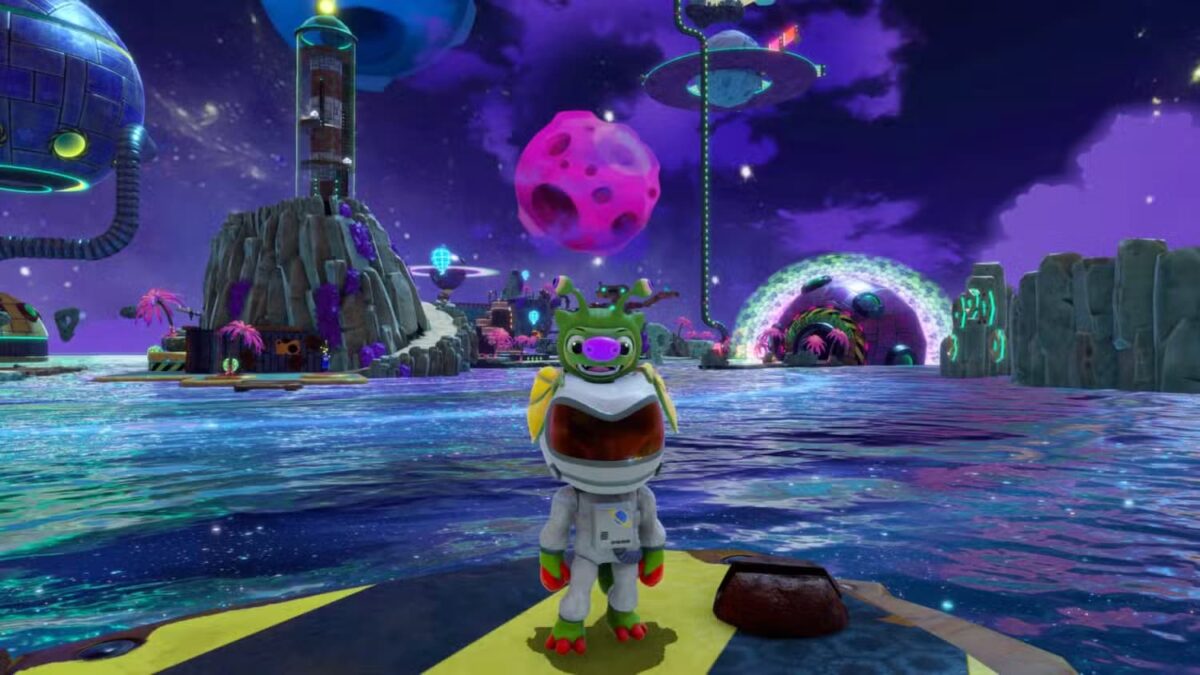
Herein lies the heart of the matter, the critical core of what makes Yooka Replaylee such a fascinating and divisive “remakester.” The developers didn’t just fix the controls; they completely changed how you progress through the game, and in doing so, changed its very genre identity.
In the original Yooka Laylee and its Banjo Kazooie inspiration, the progression was similar to a Metroidvania. Players would explore a world, encounter obstacles they couldn’t overcome, and would need to acquire a new ability in a later level to return and unlock new paths.
This design philosophy treats each world as a giant puzzle to be solved over time. Yooka Replaylee throws this entire concept out the window. Players are now given their complete moveset from the very beginning of the game. The controversial mechanic of spending “Pagies” (the game’s main collectible) to expand the size of the worlds has also been removed; every level is now fully accessible from the moment of entry.
The goal, as stated by the developers, was to eliminate boring backtracking. The result, however, is a huge shift in the gameplay loop. The world is no longer a puzzle box. Instead, to fill the now-larger spaces, the number of Pagies has more than doubled to 300, with many scattered about in a manner that draws direct comparisons to Super Mario Odyssey. This “Odyssey-fication” of the collectibles transforms the experience. The gameplay loop is no longer about careful discovery and unlocking new areas with new abilities; it’s about entering a zone, clearing icons off a map, and moving on to the next—a structure more akin to a modern open-world checklist game.
This change has been very divisive among players. Some praise the newfound freedom, enjoying the ability to tackle any challenge at any time without being blocked. Others, however, feel this change has removed the core incentive for thoughtful exploration that defined the genre. This feeling is made worse by the fact that players only need to collect 125 of the 300 Pagies to access the final boss, which can devalue the act of collection and make more than half the game’s content feel entirely optional.
The “loss of old-school charm,” therefore, isn’t just about aesthetic choices; it’s about this major shift in game design. Yooka Replaylee is no longer a pure spiritual successor to Banjo Kazooie‘s structure, but a hybrid that has adopted the style of a more modern platformer.
Yooka Replaylee Changes
Despite the huge shifts in its core design, Yooka Replaylee is overflowing with personality. The story has been rewritten to flow better, with a new opening that gives the central conflict more weight and an altered ending. The writing feels more confident, shedding some of the original’s overly self-deprecating jokes in favor of genuinely funny, dry British wit that hits the mark more often. The buddy-duo of Yooka and Laylee is as charming as ever, and their interactions with the world’s quirky cast of characters remain a highlight.
The overall difficulty, however, is definitely low. With the fluid controls and a full moveset, most platforming and combat encounters present little to no challenge for seasoned players. Boss fights, with the exception of a more engaging and reworked final encounter, are largely simple pattern-recognition tests that are over quickly. This low difficulty is not an oversight but a deliberate choice. Playtonic seems to have shifted from replicating the sometimes-punishing nature of N64-era games to creating a more accessible, low-friction “comfort food” experience.
Evidence for this can be found in the expanded “Tonics” system. These are gameplay modifiers that can be unlocked and equipped, allowing players to customize their experience. While many are cosmetic, several allow players to opt-in to a higher difficulty, offering options like one-hit health or adding fall damage. By making difficulty optional, the developers have made the game more appealing to a wider audience, making it a welcoming entry point for younger players or anyone seeking a relaxing, stress-free collectathon.
he old, frustrating arcade minigames have also been replaced by a new isometric platformer starring Rextro, a great improvement that adds another layer of enjoyable, low-stakes content.
Final Thoughts
Yooka Replaylee is a fascinating story of redemption. As a technical product, it is a huge success. The visual and audio overhaul is fantastic, and the fundamental improvements to the controls and camera transform a once-frustrating game into a real pleasure to play. In addressing nearly every complaint leveled at the 2017 original, Playtonic has successfully redeemed the franchise from a gameplay standpoint and created a polished, confident, and thoroughly enjoyable 3D platformer.
However, in its ambitious quest to modernize, it has traded one identity for another. The old-school progression and sense of gradual discovery that defined its N64 inspirations have been sacrificed for a more streamlined, open, and immediately gratifying structure. It is a competent platformer, but a less faithful spiritual successor. The result is a game that feels less like a fixed Banjo Kazooie and more like Playtonic’s take on Super Mario Odyssey.
Whether this trade-off is worth it will depend entirely on the player. For those who were turned off by the original’s clunkiness and who enjoy modern, free-form collectathons, Yooka Replaylee is an absolute must-play and the definitive version of the adventure. It’s a vibrant, charming, and fun-filled journey from start to finish. However, series purists who cherished the original’s design philosophy—and were simply hoping for a more polished version of that specific experience—may feel that in gaining so much, something important was also lost.
Pros and Cons
Pros
- Looks and sounds amazing, like a big-budget AAA game.
- Controls and camera are fixed, making the game a joy to play.
- Levels are now packed with things to do, so they don’t feel empty.
- Helpful features like a map and fast travel make playing much smoother.
- The writing is genuinely funny and full of charm.
Cons
- Giving you all moves at the start removes the old-school feeling of progression and discovery.
- The game is very easy, which might bore experienced platformer fans.
- It loses some of its unique retro identity by trying to be more modern.
- The Nintendo Switch 2 version performs poorly at launch.
